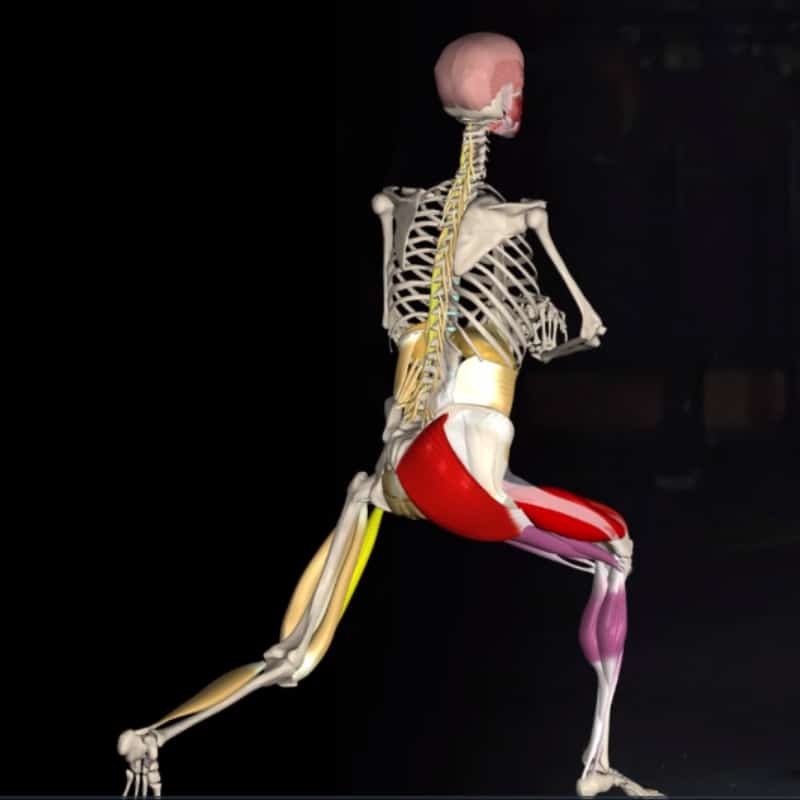The Lunge exercise is a fundamental lower-body movement that targets various muscle groups and is a valuable addition to any workout routine. Lunges engage not only the quadriceps but also the glutes, hamstrings, and more. In a previous article about how to lunge, we discussed the proper technique for performing lunges and the muscles involved. This Muscle and Motion article will present effective lunge variations for a challenging workout starting today.
Why is it important to incorporate different variations of lunges?
Incorporating different variations of an exercise, such as lunges, is crucial for several reasons. Firstly, it helps activate different muscles and promotes balanced muscle development. Secondly, it prevents training plateaus by challenging your muscles in new ways. Thirdly, just as our movements in real life are not always the same, applying the same principle to your workout routine is important if you aim to enhance your functional abilities. Fourthly, incorporating different variations of an exercise applies varied loads to your joints and muscles, which can help prevent overload injuries.
Lastly, it keeps workouts interesting, increasing motivation and adherence to your fitness routine. By incorporating diverse exercise variations, you can optimize muscle development, enhance functional strength, prevent injuries, and stay motivated for long-term progress.
Ten lunge variations that will strengthen your leg muscles from all angles
-
Forward lunges
Forward lunges, usually referred to as the lunge, is the most classic known variation. Forward lunges target the quadriceps, hamstrings, and glutes, providing an effective way to build overall leg strength and improve stability.
-
Reverse lunges
Unlike forward lunges, reverse lunges involve stepping backward instead of forward. This variation places an emphasis on balance and coordination while targeting the same muscle groups as forward lunges.
-
Walking lunges
During walking lunges, rather than pushing yourself back to the starting position, you push yourself up and continue with a lunge on the opposite leg. This exercise is often utilized to enhance cardiovascular endurance by performing walking lunges over an extended distance.
-
Side lunges
Side lunges are distinct from traditional lunges as they combine movements in two different planes: the sagittal plane and the frontal plane. By combining movements in both the sagittal and frontal planes, side lunges effectively target the inner thigh muscles. Additionally, they contribute to improved lateral stability and enhanced hip mobility.
-
Slider lunges
Slider lunges offer unique properties due to the use of sliders or gliding discs. By placing one foot on the slider and performing lunges, you introduce a challenging stability element to the exercise.
-
Overhead barbell lunges
Overhead barbell lunges not only engages the lower body muscles but also requires significant core stability and upper body strength to hold the barbell overhead.
By combining lower-body strength and upper-body stability, overhead barbell lunges provide a comprehensive full-body exercise that can improve overall strength, balance, and coordination.
-
Lunge and press (kettlebell)
Lunge and press with a kettlebell is a compound exercise that combines two movements in a single motion. By pressing the kettlebell while kneeling in a lunge position, this exercise effectively targets your core muscles, enhances stability, and engages both your legs and shoulder muscles.
-
Jumping lunges
Jumping lunges offer unique properties by incorporating an explosive jumping motion into the traditional lunge exercise. This variation adds plyometric elements, making it a high-intensity exercise that increases explosive power, cardiovascular endurance, and lower body strength.
-
Rotational lunge (dumbbell)
Rotational lunges with dumbbells add a unique twist to the traditional lunge exercise. By incorporating rotation while holding a dumbbell, this variation engages the gluteus maximus as the primary hip extensor and external rotation. Additionally, the rotational movement engages the core muscles, obliques, and hip stabilizers, providing a comprehensive workout for the lower body and enhancing overall stability and strength.
-
Balance lunge (straps)
Balance lunge with straps is a unique variation of the lunge exercise where the rear leg is kept in the air while holding the straps. This challenging movement not only targets the quadriceps femoris and gluteus maximus, but it also puts a strong emphasis on single-leg balance and stability. By utilizing straps, this variation further engages the hip abductors, which play a crucial role in stabilizing the active leg during the exercise.
In summary, there are many lunge variations you can use depending on your preference and your goals that will add variety to your training. Want to learn about how to do lunges with proper form and technique? Check out our article regarding this topic for further insights.
At Muscle and Motion, we believe that knowledge is power, and understanding the ‘why’ behind any exercise is absolutely essential for your long-term success.
Let the Strength Training App help you achieve your goals! Sign up for free.
Written by Uriah Turkel, Physical Therapist and Content Creator at Muscle and Motion.


